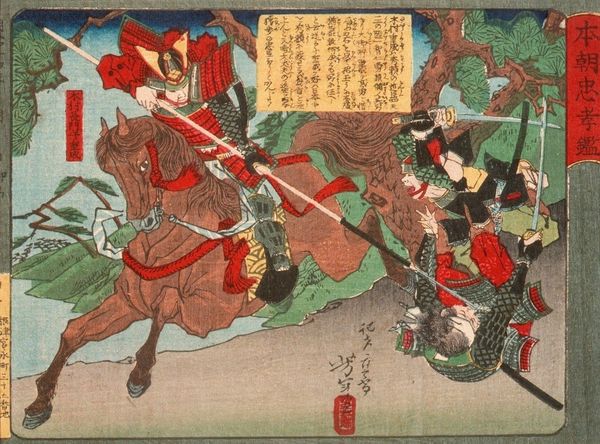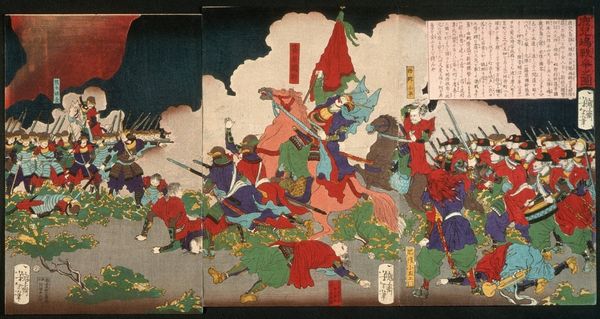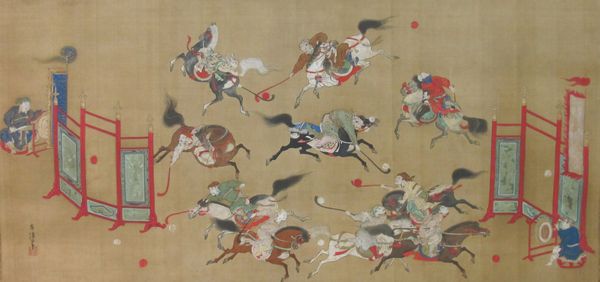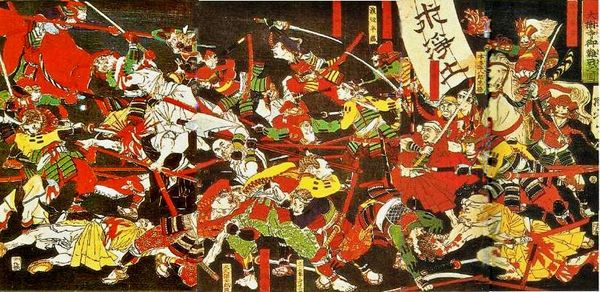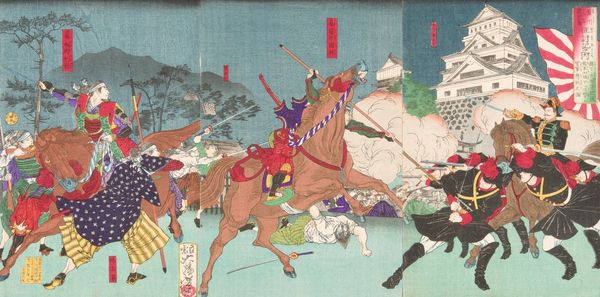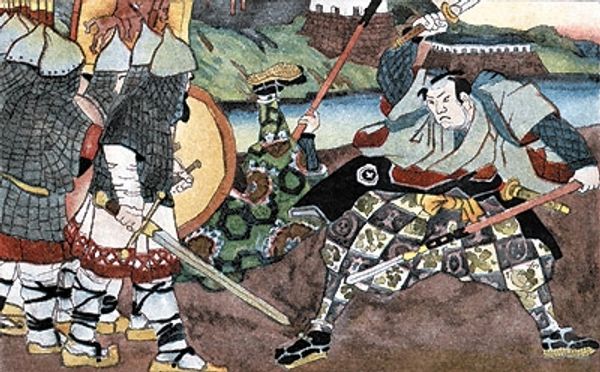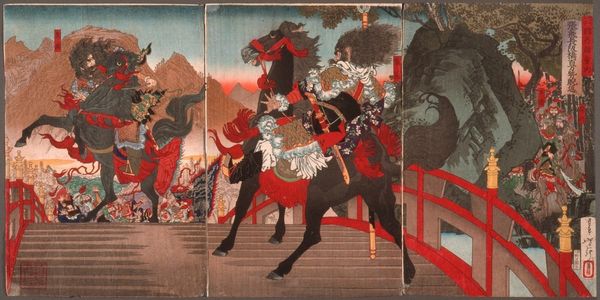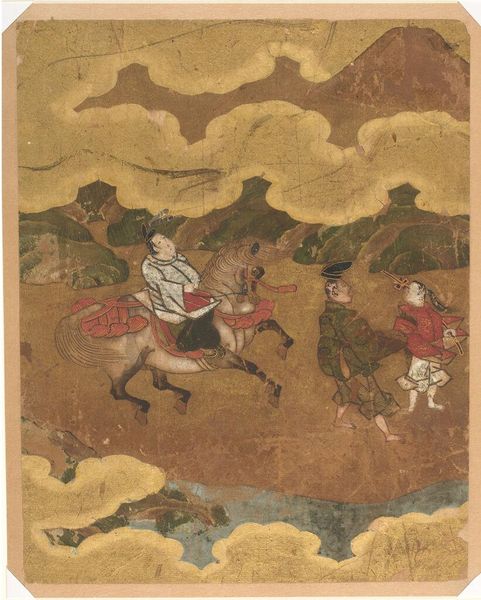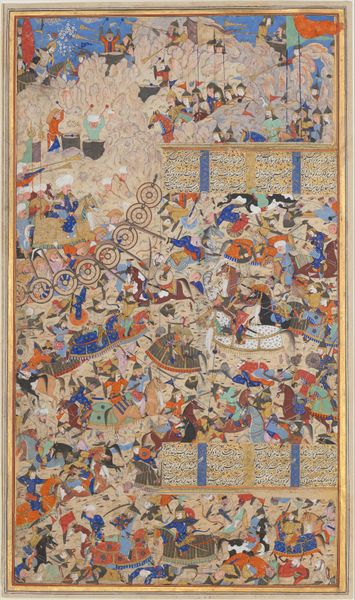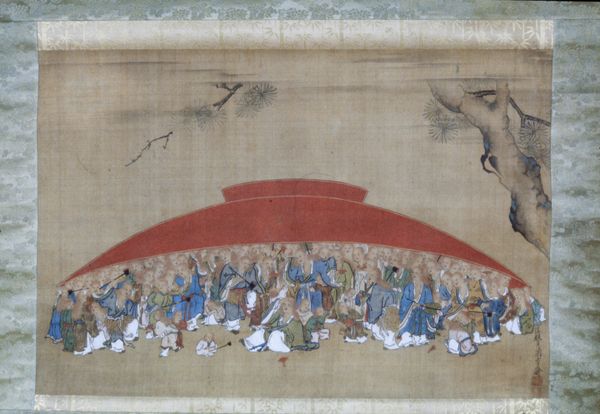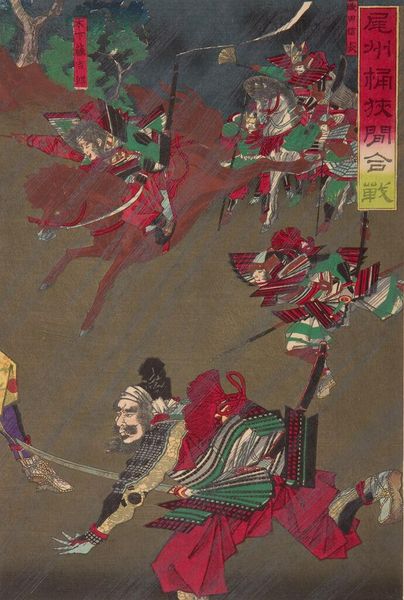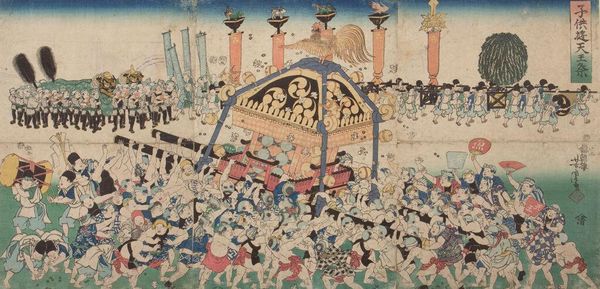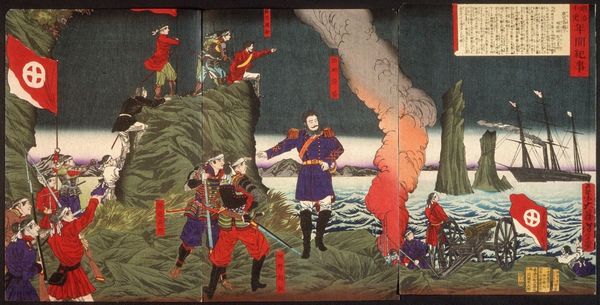
painting, textile, watercolor
#
medieval
#
water colours
#
painting
#
asian-art
#
textile
#
figuration
#
oil painting
#
watercolor
#
islamic-art
#
history-painting
#
miniature
#
watercolor
Copyright: Public domain
Editor: This is a painting from 1336, "Darab and Rastnawan fight the Rumis," by Ahmad Musa. It's made with watercolors on textile and it’s filled with figures on horseback! The scene feels chaotic and intense. How do you interpret this work? Curator: It’s a potent illustration, isn't it? Let's consider the moment of its creation. The 14th century was a time of immense social and political upheaval. We have the Mongol Empire’s influence rippling across the Asian continent, various forms of artistic cross-pollination taking place. How do you think those factors might have affected Musa's visual language? Editor: Hmm, it's interesting. All the riders appear very similarly dressed, maybe referencing different people unified. Curator: Exactly. Look at the ways hierarchical relationships are being coded. Who seems to be centered within this composition, and what might that reveal about the values being upheld here? Editor: Well, I see several figures in the front standing out because they're a lighter color, but beyond that, I'm unsure who is Darab and who is Rastnawan. I also see how many shades of browns and reds dominate, but what is its purpose? Curator: What does that choice of colors suggest about the subjects that the artist may be trying to depict? Do you find certain cultural tropes represented through his use of pigment? Consider these depictions in light of what we know about cultural exchanges from that period. Editor: So, this isn't just about depicting a battle; it's also about cultural identity and how the artist is choosing to represent different groups. Curator: Precisely! Musa isn't just illustrating a historical event. He’s contributing to a larger narrative about power, identity, and the ongoing negotiation of cultural boundaries. And, that dialogue continues to resonate today. Editor: That makes me rethink how I look at historical artworks. It is not merely documentation; rather a representation shaped by the artist's context. Curator: And our own, as viewers in the present! These works speak differently depending on who is listening.
Comments
No comments
Be the first to comment and join the conversation on the ultimate creative platform.
